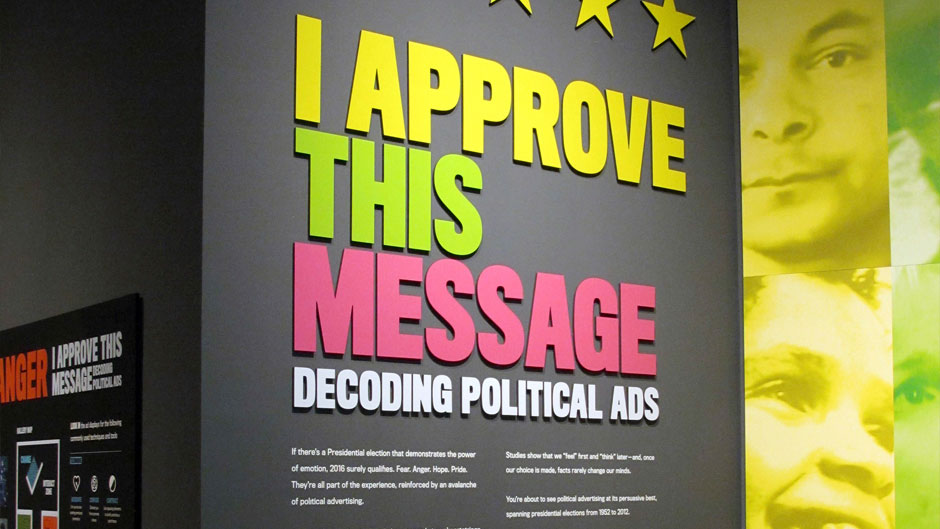In 1988, Massachusetts Governor Michael Dukakis was running against George H. W. Bush and leading in the polls.
Dukakis was against the death penalty and for weekend furlough programs for prisoners. Bush was against both. The Bush campaign ran a television ad using the case of Willie Horton, a Black prisoner who, while on a weekend furlough, raped a woman and stabbed her boyfriend.
Dukakis lost the election.
Political advertising can change minds. That’s why the Kantar Media CMAG group estimates that spending on political ads for the 2020 election could reach $6 billion.
“The key to making a political advertisement effective is targeting, both in terms of the actual voter being reached, as well as having an understanding of what issues are important to that audience,” said Alyse Lancaster, associate professor and chair of the Department of Strategic Communication in the University of Miami School of Communication.
In the early days of political advertising, mudslinging was the name of the game. Many experts cite the beginning of negative campaigning back to the race between John Adams and Thomas Jefferson in 1800. Both candidates maligned each other heartily throughout the campaign.
Back in those days, advertising was delivered in small pamphlets. Some did include the candidates’ scholarly discussions on political issues of the day, said Gregory Koger, professor of political science.
“Political advertising has always been an essential part of the democratic process,’’ said Koger. “It is a way for candidates to persuade voters as to why they are better than their opponents.”
With the advent of television, political advertising took to the screen to reach a wider audience. But in the 1960s and 1970s and even the 1980s, a television ad had to be planned weeks or even months in advance since it took time to shoot, edit, and deliver to the stations, according to Koger. Usually, only one ad was aired at a time and one message was conveyed.
Fast forward to this election year and the changes seem mindboggling. Now you can have a candidate say something at a rally and the opposing campaign can fashion an ad criticizing the opponent almost instantaneously, he said.
Such was the case with the now infamous “Covita” ad, done by the Lincoln Project, a political action committee of former Republicans. The ad mocks President Trump’s return to the White House after his stay at the Walter Reed National Military Medical Center for treatment of the coronavirus.
Set to the tune of the Evita song “Don’t Cry For Me Argentina,” it shows the president taking off his mask as a singer belts out lyrics like “Don’t cry for me White House staffers, the truth is, I will infect you, all through my tweeting, my mad existence, I broke my promise, won’t keep my distance.”
The ad went viral. This points to another major change in the advertising landscape, said Lancaster. The advent of social media and the ability for companies to gather consumer data facilitates the targeting of certain segments of the population.
“Political campaigners nowadays also need to focus on the potential virality of the content that they are posting on social media,” said Lancaster. Issues that appeal to young voters like climate change, student loans, abortion, and the cost of college may become ads on Spotify, Twitter, Instagram, and other platforms that attract the younger voter.
Other ads may be fashioned for older voters, who are concerned about Social Security and the impact of COVID-19 on the elderly, he added.
“The more creative the video, the more likely it is to be shared,” Lancaster pointed out. “Video sharing is the ultimate word-of-mouth advertising. So, if a political video is shared on Facebook or on another social media platform, there is a certain element of trust that comes along with seeing that video posted by someone who you are personally connected to.”
The agility of getting video messages on the air or on social media also can help candidates amend their messages faster, said the experts. Earlier in the 2020 campaign, the Trump faction ran ads criticizing Biden by saying that voting for a candidate that wanted to “defund the police” meant voting for anarchy and complete chaos on city streets. Many of the television ads showed looters burning cars and sacking stores.
As the number of COVID-19 deaths increased, and the handling of the pandemic took center stage as a major campaign issue, those ads faded.
“The Trump campaign is now pushing that Biden is too old for the job,” Koger said. One ad mockingly depicts Biden in what looks like a nursing home and needing to be fed.
Koger said that these negative ads may explain why Biden seems to be out in public much more. “He is wearing a mask and social distancing, but he is out and about.”

